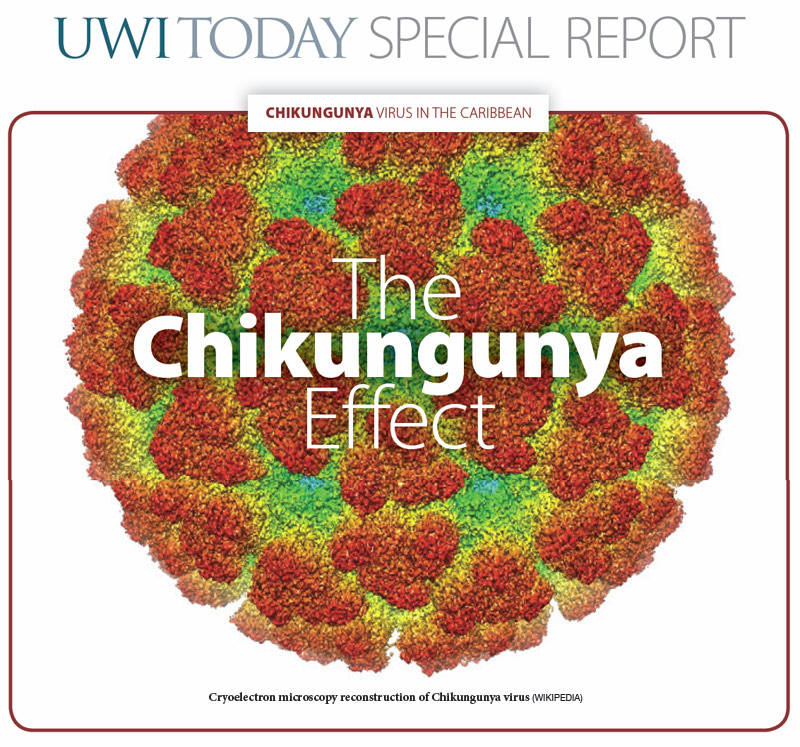 |
 |
 |
|
February 2015 |
With the growing concern and anxiety about the impact of the Chikungunya virus in the Caribbean as figures for infection crossed the one million mark in just under a year, UWI TODAY focuses on public education in this issue. Because of the newness of the virus to the region – the first case was reported in December 2013 – there is still a lot of ignorance about its nature, and a lot of rumours have been flying about like mosquitoes and of course, everybody has “the cure.” But while it is not a fatal virus, per se, the Chikungunya effect might be much more profound than it seemed, and true to its contortionist’s features, it might really play a significant role in ‘reshaping’the region. Dr James Hospedales, Executive Director of the Caribbean Public Health Agency, the regional body that has taken a lead role in informing and directing management, warns that because of its capacity to complicate existing ailments and weakened areas, it will result in higher mortality rates, especially among the elderly, when the figures come in. He has also complained that there are not nearly enough resources to cope with the strain on the public health systems regionally and it bodes ill for the capacity to manage. There has to be a new approach, he says, to Chikungunya, Dengue and vector control, and to epidemic control. “Chikungunya is here to stay,” he says. In these next few sections, we try to present as much of the available information on the virus and its implications for the region’s overall epidemic control. Doctors, patients, scientists, economists, pharmacists and public health officials have contributed in one way or another to providing data on what they have encountered in the wake of the virus. |

